
The golden circle in Iceland is a 186-mile-long route that will take you to the three most popular natural attractions in Iceland: the national park, a geothermal area full of geysers, and the Gullfoss waterfall. Today we'll be traveling this route. We will start at the geyser area.
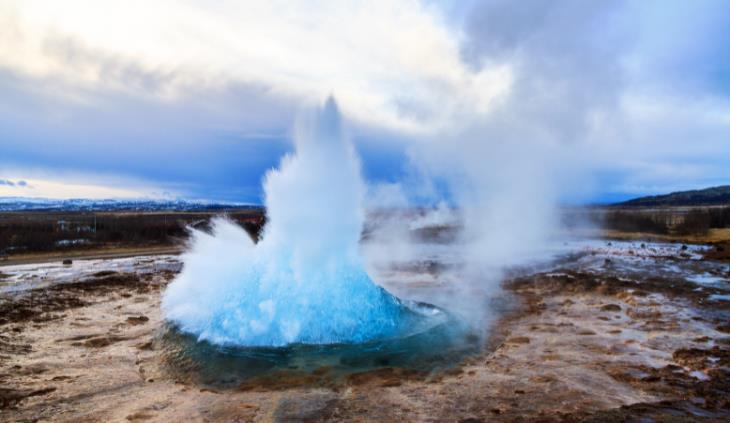
The most famous geyser in the Haukadalur geothermal valley is the Great Geysir. This word in Icelandic means to gush. While this geyser is no longer active, it used to be one of the most active geysers in the valley, reaching up to 560 feet up in the air. And it’s this geyser that gave us the word geyser! Yes, all geysers are named after this one.
Today the most active geyser is the Strokkur (churn in Icelandic). It irrupts every 5 to 8 minutes, and it was born along with the rest of the geysers in the valley over 1,000 years ago. The first documented geyser eruption from this valley occurred in 1294 due to a series of changes in the geothermal area that created several new hot springs. The Strokkur geyser became inactive in 1896 due to another seismic shock, and then it became active again in 1963.
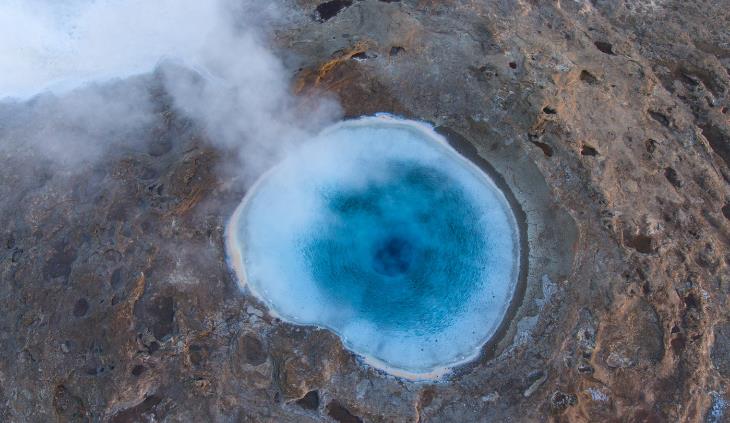
The Strokkur's activity starts at a depth of 75 feet below the ground at a temperature of 250°F. When it bursts, it can reach height of up to 130 feet! Surrounding this geyser are over a dozen other hot water blowholes and boiling mud.
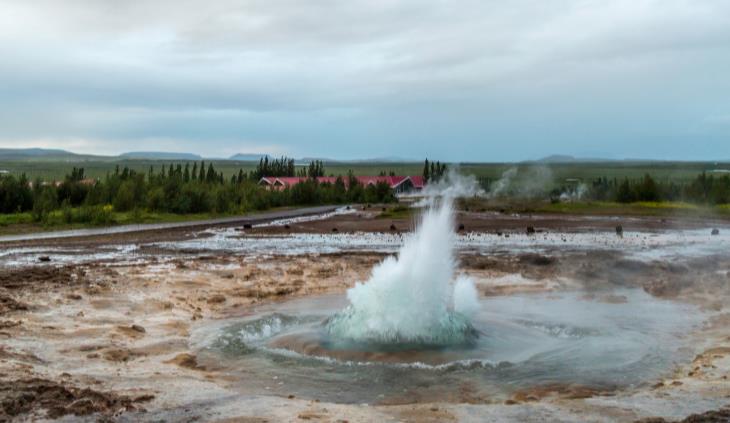
A geyser needs a heat source. Geothermal energy comes from within the earth, providing the heat source: Magma that sits about 3 miles below the surface of the earth.
It also needs water. Water either pools underground or collects in mile-long shafts of porous stone called rhyolite, which is a volcanic rock that lines the geyser's "plumbing system." The rhyolite’s hard lining is vital to the operation of the geyser because it’s what contains the enormous water pressure the geyser produces.
The magma keeps the water constantly at a temperature higher than its boiling point. If there are cracks in the surface (called fumaroles), a small amount of steam can escape and release pressure. But if the ground is sealed, the pressure that accumulates will eventually punch a hole through the ground, letting out all that steam and pressure. This creates what's called the mouth of the geyser. The steam quickly expands, and the explosion will last until the water runs out or the pressure balance is restored.
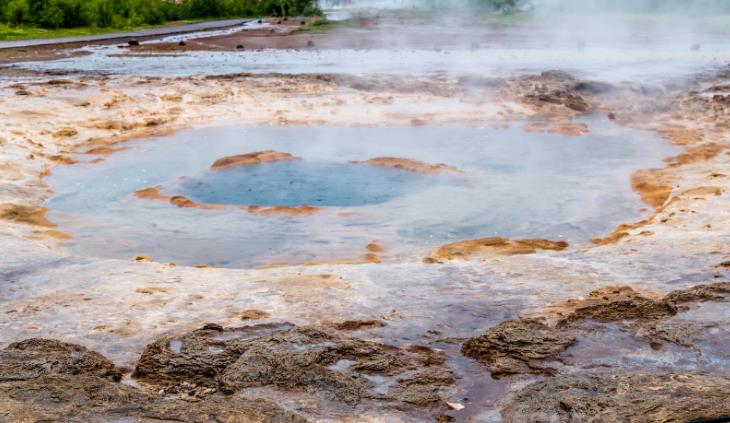
If you take a car and travel by yourself, the hot spring area is about a 2-hour drive from Reykjavík, the largest municipality in Iceland. You will take either route 35 or route 37.
We think the best option would be to join an organized tour which will also take you to see waterfalls and the national park. The geysers are active year-round, so you can come and visit at your convenience. High season is June to August, and the busiest hours are 10 AM to 4 PM.
Access to the Valley is free of charge. If you choose to spend the whole day, there is also a secret lagoon and two small hot springs nearby.
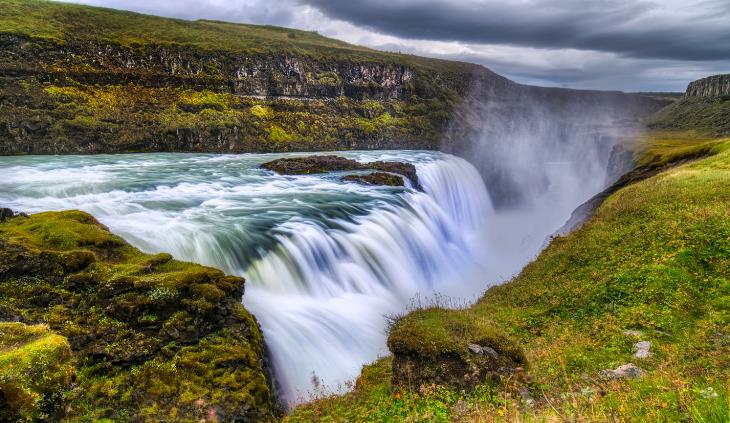
The Gullfoss waterfall is another extremely popular natural tourist attraction in Iceland, and is part of the golden circle. It is a two-tiered waterfall cascading down in two stages, one 36 feet tall and the other 69 feet tall, into the 1.6-miles-long crevasse below. This crevasse lengthens by almost 10 inches a year due to water erosion.
Gullfoss in Icelandic means golden. The waterfall got its name because, on a sunny day, the water seems golden brown. The Gullfoss waterfall is the largest waterfall in all of Europe in terms of volume. It was pronounced as a nature reserve in 1979, and was named one of the world's top 10 waterfalls by worldofwaterfalls.com. When leaving Reykjavík, it is the last stop on the Golden Circle route.
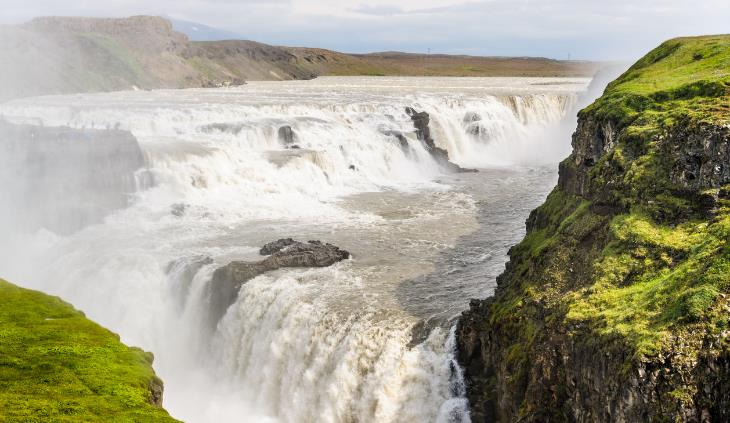
Visiting Thingvellir national park

The unique geology of the area of the national park created a natural amphitheater, perfect for public speaking. When Viking settlers arrived in the area in the 10th century, they chose it to be their site for parliament. Their parliament was called Althingi and it is the world's oldest parliament.
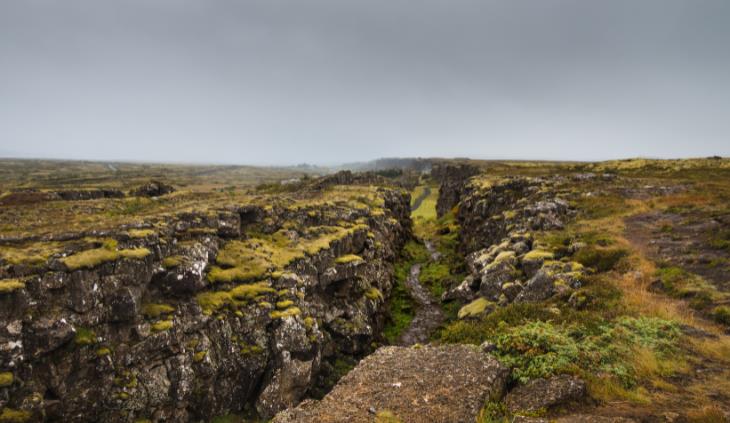 In the park, you can see the mid-Atlantic ridge, where the North American and Euro-Asian tectonic plates meet. They pull apart at a rate of nearly an inch a year, creating the Thingvellir Rift Valley. In winter, the park offers a great view of the northern lights.
In the park, you can see the mid-Atlantic ridge, where the North American and Euro-Asian tectonic plates meet. They pull apart at a rate of nearly an inch a year, creating the Thingvellir Rift Valley. In winter, the park offers a great view of the northern lights. 
